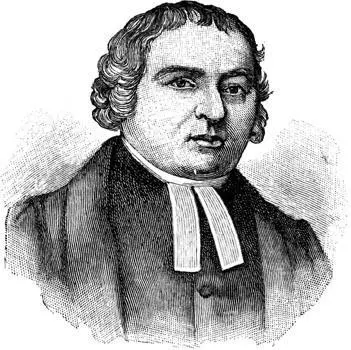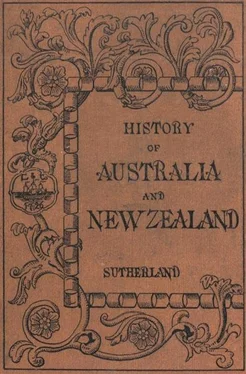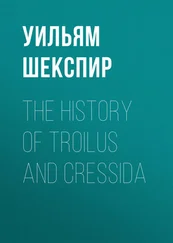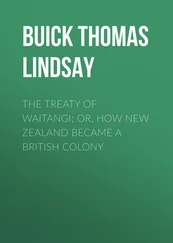8. Maoris visit Sydney.—In 1793, Governor Hunter at Sydney directed that the convicts at Norfolk Island should be set to weave the fine flax that grew wild in that island. They tried, but could make no cloth so fine and soft as that made by the Maoris out of very much the same sort of plant. A ship was sent to try and persuade some Maoris to come over and teach the art. The captain of the ship, being lazy or impatient, did not trouble to persuade; he seized two Maoris and carried them off. They were kept for six months at Norfolk Island, but Captain King treated them very well, and sent them back with ten sows, two boars, a supply of maize-seed and other good things to pay them for their time. When King became Governor of New South Wales he sent further presents over to Te Pehi, chief of the tribe to which these young men belonged, and hence Te Pehi longed to see the sender of these things. He and his four sons ventured to go in an English vessel to Sydney, where they were astonished at all they saw. On his return Te Pehi induced a sailor named George Bruce, who had been kind to him when he was sick on board ship, to settle in the tribe; the young Englishman married Te Pehi’s most charming daughter, and was tattooed and became the first of the Pakeha Maoris, or white men who lived in Maori fashion. Pleased by Te Pehi’s account of what he had seen, other Maoris took occasional trips to Sydney, working their passages in whaling ships.
9. Friendly Relations.—Meanwhile English vessels more and more frequently visited New Zealand for pork and flax and kauri pine, or else to catch seals, or merely to take a rest after a long whaling trip. The Bay of Islands became the chief anchorage for that purpose, and thither the Maoris gathered to profit by the trade. Some of the more adventurous, when they found that the English did them no harm, shipped as sailors for a voyage on board the whalers; but though they made good seamen they were sometimes sulky and revengeful, and rarely continued at it more than two or three years.
In 1805 a Maori went with an English surgeon all the way to England, and returned with the most astounding tales of London and English wonders. During the next four or five years several other Maoris went to England, while, on the other hand, a few very respectable white men began to settle down in New Zealand. They were far superior to the rough sailors and liberated convicts of Sydney, who so far had been the most frequent visitors, so that mutual good-will seemed to be established, as the Maoris found that there was much they could gain by the visits of the white men. But all this friendliness was marred by an unfortunate occurrence.
10. The Boyd Massacre.—In 1809 a ship named the Boyd sailed from Sydney to go to England round Cape Horn. She had on board seventy white people, including some children of officers at Sydney who were on their way to England to be educated. As she was to call at New Zealand to get some kauri spars, five Maoris went with her, working their passage over. One of these Maoris, named Tarra, was directed during the voyage to do something which he refused to do. The captain caused him to be twice flogged. When the ship anchored in a bay a little to the north of the Bay of Islands, Tarra went ashore, and showed to his tribe his back all scarred with the lash. Revenge was agreed on. The captain was enticed ashore with a few men; and they were suddenly attacked and all killed. Then the Maoris quietly got alongside the ship, rushed on board and commenced the work of massacre among men, women and children, who were all unarmed. Some of the children fell and clasped the feet of Tarra, begging him to save them, but the young savage brained them without mercy. All were slain except a woman and two children who hid themselves during the heat of the massacre, and a boy who was spared because he had been kind to Tarra. All the bodies were taken ashore and eaten. One of the chiefs while curiously examining a barrel of gunpowder caused it to explode, blowing himself and a dozen others to pieces.
Te Pehi, the head chief of the Ngapuhi, was extremely vexed when he heard of this occurrence, and took some trouble to rescue the four survivors, but five whaling vessels gathered for revenge; they landed their crews, who shot thirty Maoris whether belonging to Tarra’s tribe or not, and in their blind fury burnt Te Pehi’s village, severely wounding the chief himself. This outrage stopped all friendly intercourse for a long time. The whalers shot the Maoris whenever they saw them, about a hundred being killed in the next three years, while the Maoris killed and ate any white people they could catch. Thus in 1816 the Agnes , an American brig, happened to be wrecked on their shores. They killed and ate everybody on board, except one man, who was tattooed and kept for a slave during twelve years.
11. The Missionaries.—In spite of all these atrocities a band of missionaries had the courage to settle in New Zealand and begin the work of civilising these Maori tribes. This enterprise was the work of a notable man named Samuel Marsden, who had in early life been a blacksmith in England, but had devoted himself with rare energy to the laborious task of passing the examinations needed to make him a clergyman. He was sent out to be the chaplain to the convicts at Sydney, and his zeal, his faith in the work he had to do, and his roughly eloquent style, made him successful where more cultured clergymen would have failed. For fourteen years he toiled to reform convicts, soldiers, and officers in Sydney; and when Governor King went home to England in 1807, after his term was expired, Marsden went with him on a visit to his friends. While in London, Marsden brought before the Mission Society the question of doing something to Christianise these fierce but intelligent people, and the society not only agreed, but employed two missionaries named Hall and King to undertake the work.

The Rev. Samuel Marsden, “the Apostle of New Zealand”.
When Marsden, along with these two courageous men, started back to Sydney in the Ann convict ship, in 1809, there was on board, strangely enough, a Maori chief called Ruatara. This young fellow was a nephew of Hongi, the powerful head chief of the Ngapuhi tribe. Four years before, being anxious to see something of the wonders of civilised life, he had shipped as a sailor on board a whaler. He had twice been to Sydney and had voyaged up and down all the Pacific. At length, in 1809, he had gone to London, where he was lost in surprise at all he saw. The climate, however, tried him severely, and he was sick and miserable on the voyage back to Sydney. Marsden was kind to him and gave him a home in his own house. Ruatara had many troubles and dangers to meet, through many months, before he was at last settled among his own people.
Meantime, the new Governor of Sydney refused to allow the missionaries to go to New Zealand. The massacre of the sixty-six people of the Boyd had roused a feeling of horror, and it seemed a wicked waste of life to try to live among savages so fierce. The missionaries were therefore employed in Sydney. In 1813 Governor Macquarie directed that every vessel leaving for New Zealand should give bonds to the extent of a thousand pounds to guarantee that the white men should not carry off the natives or interfere with their sacred places. Then the trouble between the two races quieted down a little, and in 1814 the missionaries thought they might at least make further inquiries. A brig called the Active of 100 tons was bought; and on board it went Hall with another missionary called Kendall (grandfather of the poet) who had lately come out. They reached the Bay of Islands, taking with them abundance of presents. They saw Ruatara, and persuaded him with his uncle, Hongi, and other chiefs to go to Sydney in the Active , and there discuss the question of a mission station. They went, and Hongi guaranteed the protection of his tribe, the Ngapuhi, if the missionaries would settle in their territory.
Читать дальше













